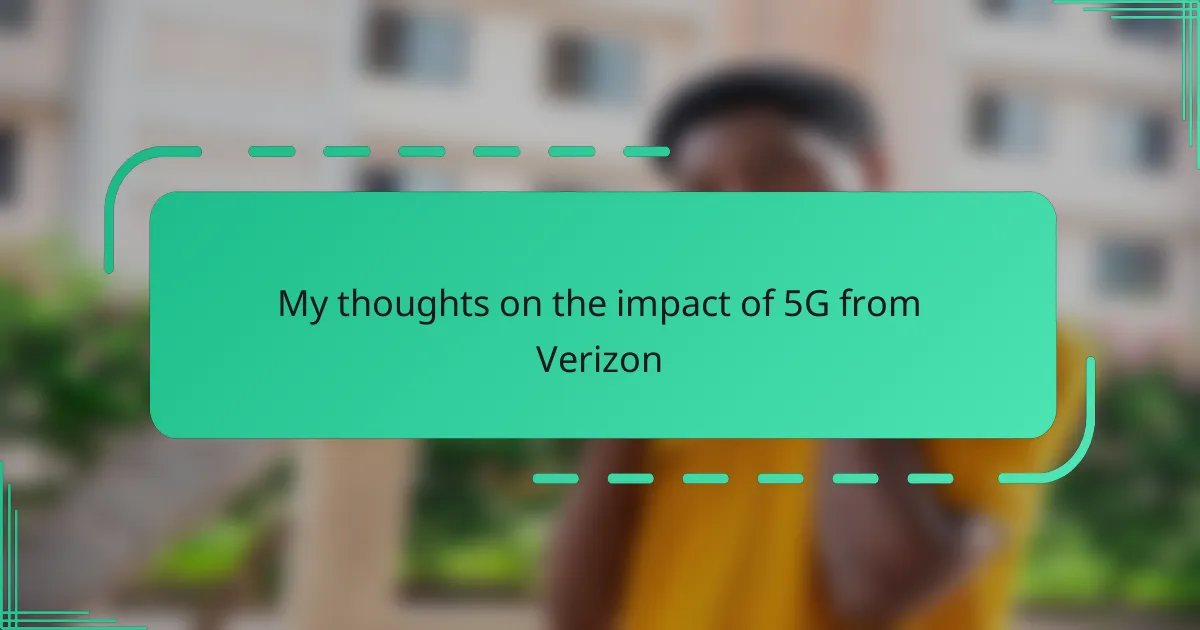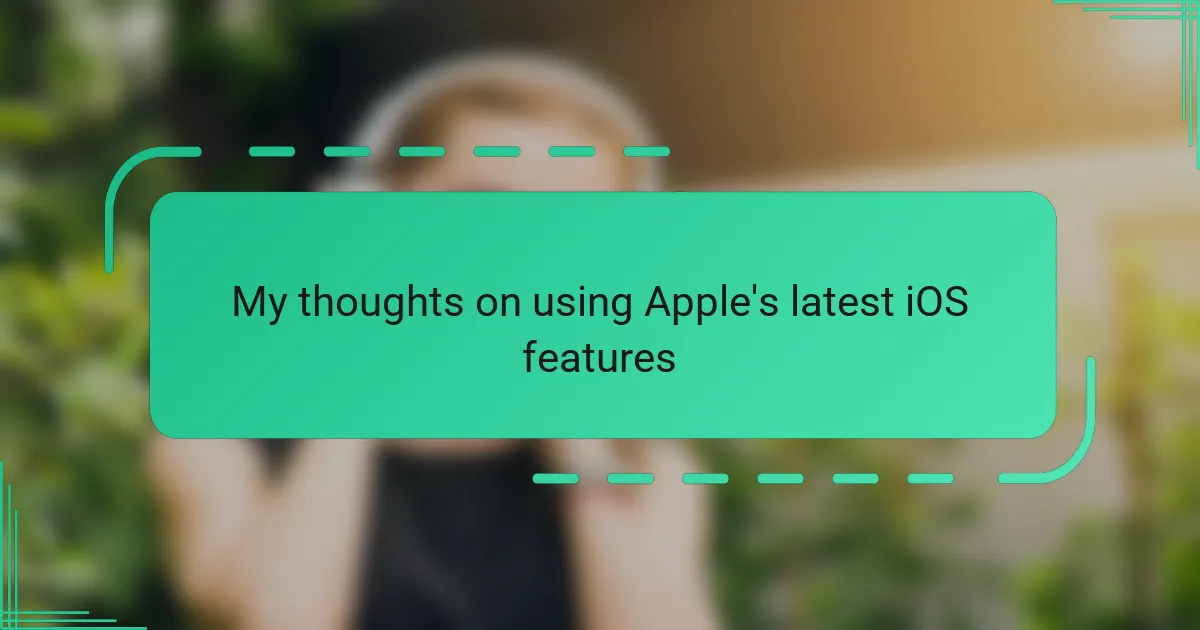Key takeaways
- 5G technology offers significantly faster data rates and lower latency, enhancing the connectivity experience for multiple devices.
- Verizon’s 5G network utilizes a combination of spectrum types to provide reliable service in various environments, though coverage can still be inconsistent.
- Users benefit from ultra-low latency, making activities like gaming and streaming smoother, but challenges remain with infrastructure and device compatibility.
- Personal experiences highlight both the advantages of enhanced connectivity and the ongoing limitations, particularly in buildings with poor signal [censured].
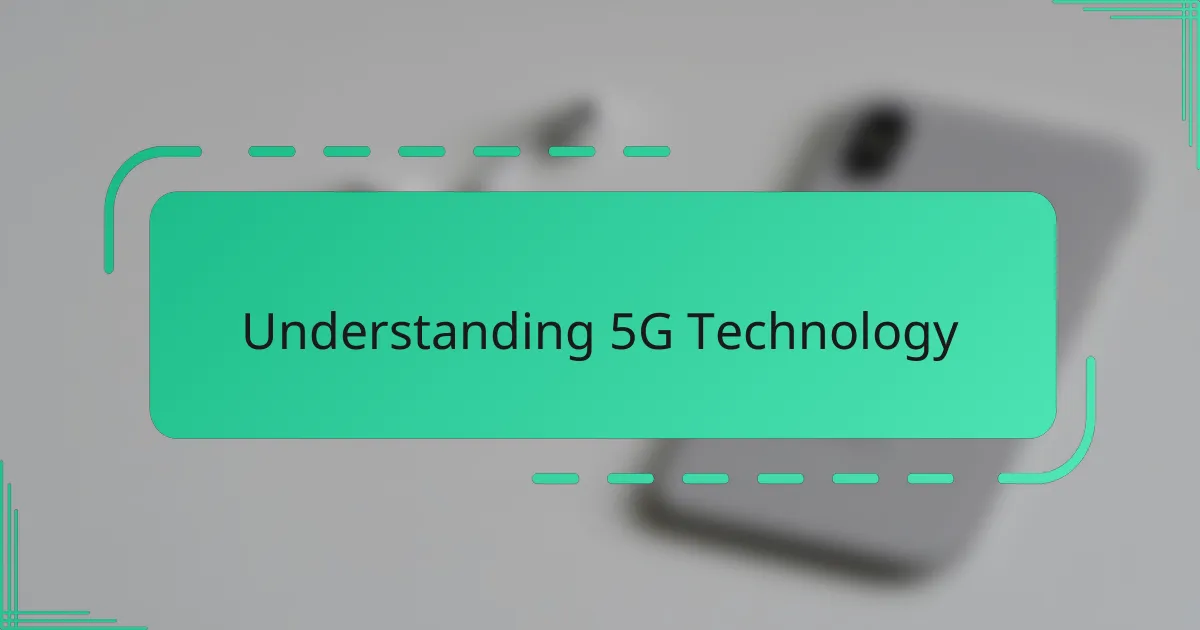
Understanding 5G Technology
When I first heard about 5G, I wondered what made it truly different from 4G. Diving into the technical side, I realized it’s all about speed and connectivity—5G offers data rates up to 100 times faster and latency so low, it feels almost instantaneous. This isn’t just a marginal upgrade; it’s a whole new way to connect.
What surprised me the most is how 5G uses higher-frequency bands and advanced technologies like beamforming to send information more efficiently. Have you ever experienced a frustrating lag during a video call? With 5G, that delay could become a thing of the past. I find it fascinating that this network can handle many more devices simultaneously without slowing down.
Understanding 5G technology also made me think about its potential beyond phones. It’s the backbone for smarter cities, autonomous cars, and connected devices in our homes. Knowing how this complex web works gives me a new appreciation for the invisible infrastructure shaping our digital lives. Wouldn’t you agree that grasping these basics helps us better see why 5G matters?
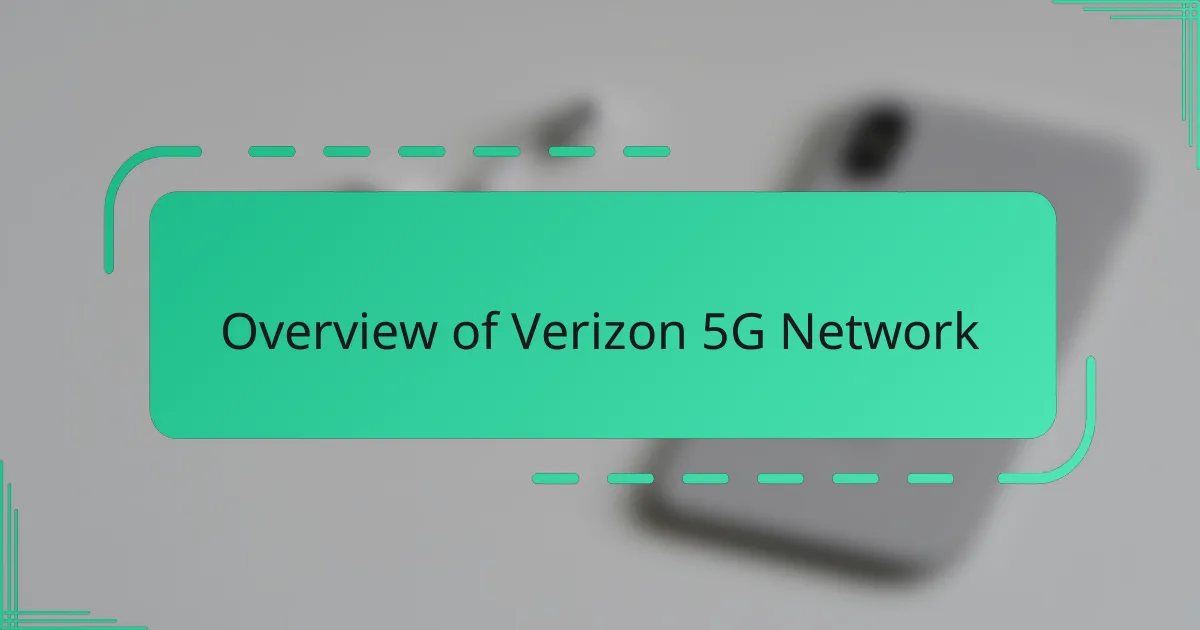
Overview of Verizon 5G Network
Verizon’s 5G network stands out because it combines three types of spectrum: low-band for wide coverage, mid-band for a balance of speed and reach, and mmWave for those lightning-fast speeds in dense areas. I remember trying it in a busy city street—suddenly, streaming my favorite show was seamless, even with dozens of people around. It felt like the network just knew how to adapt instantly.
What’s impressive to me is how Verizon strategically layers these bands to tackle different challenges. Have you ever been stuck with spotty service indoors or on the subway? Verizon’s blend of spectrum types aims to fix that, providing more consistent connectivity whether you’re at home or on the move. That thoughtful approach tells me Verizon isn’t just chasing speed but real-world usability.
Of course, the rollout isn’t perfect everywhere just yet, but watching Verizon push 5G into new markets quickly makes me optimistic. The increasing coverage maps mean more people will soon experience what I did—a network that feels both powerful and reliable. Don’t you think infrastructure like this shapes how we live and work in ways we rarely notice until it’s missing?
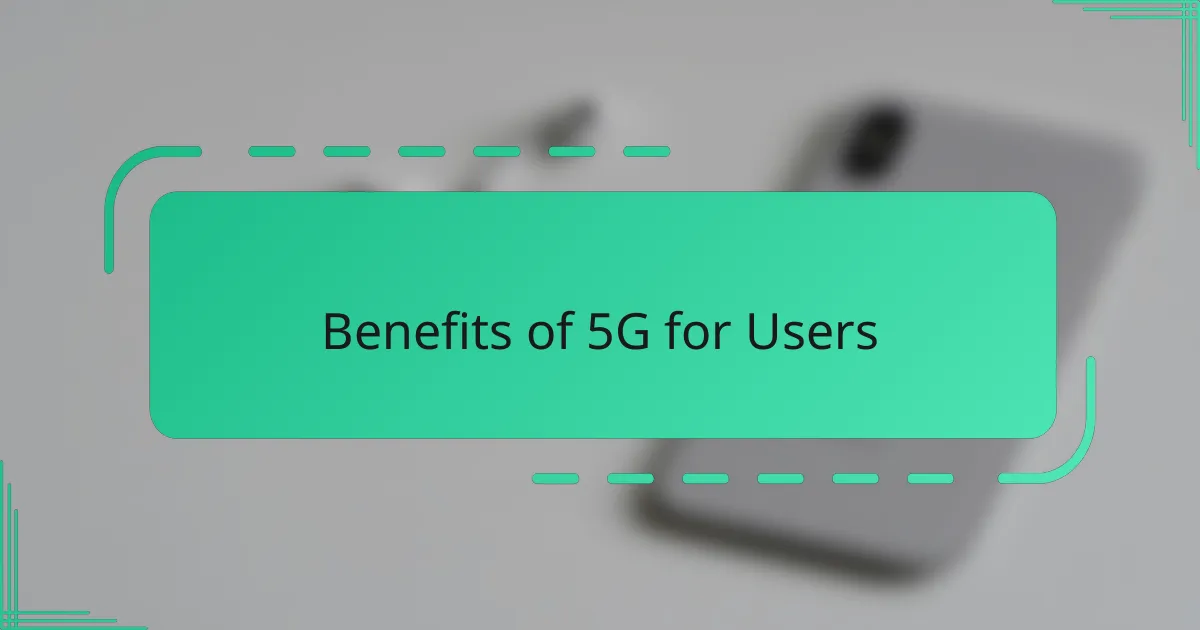
Benefits of 5G for Users
One of the biggest benefits I’ve noticed with 5G is how effortlessly it handles multiple devices at once. Whether I’m video chatting with friends while streaming music and checking emails, the connection stays strong and smooth. Have you ever felt frustrated when your network can’t keep up during busy moments? With 5G, those worries fade away.
Another thing that really stood out to me is the ultra-low latency. It’s like the delay disappears entirely, which matters especially when gaming or using apps that demand quick responses. I remember playing an intense online game, and the difference 5G made was night and day—every move felt immediate, and that really changed how immersive the experience was.
I also appreciate how 5G opens up new possibilities for everyday tasks. Imagine downloading a full movie in seconds or experiencing clearer, uninterrupted video calls—even in crowded places. It’s exciting to think about how this technology makes our digital interactions more natural and less stressful. Have you tried it in a packed café or a concert? That’s when 5G’s true power really shines.
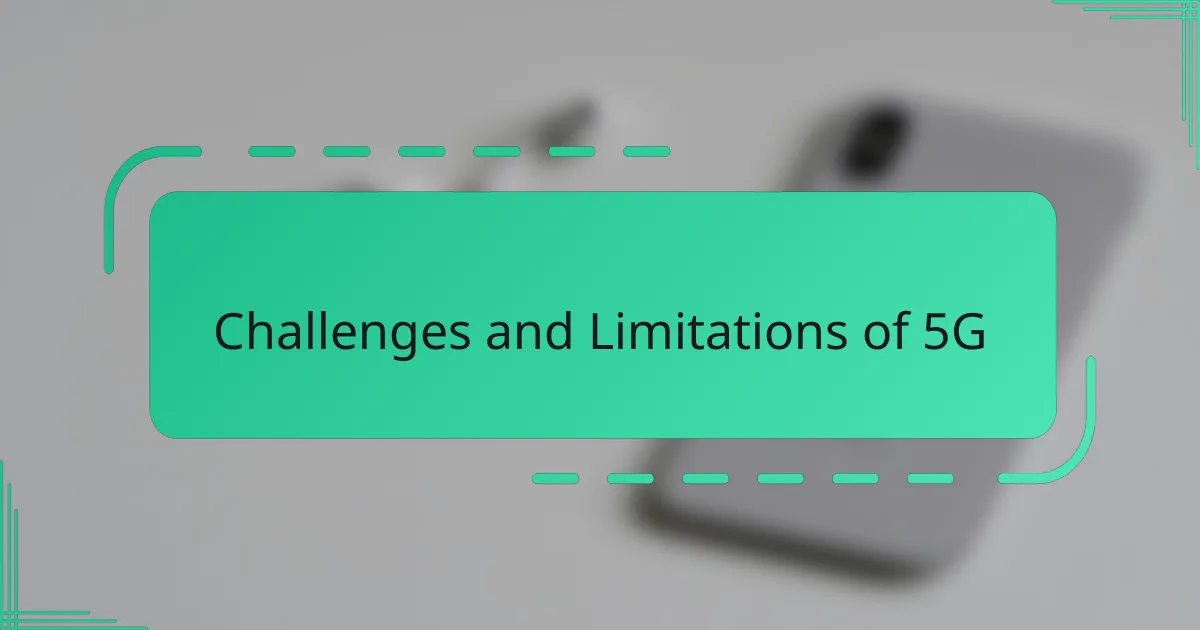
Challenges and Limitations of 5G
Despite all its promise, 5G isn’t without hurdles. For example, I’ve noticed that the high-frequency mmWave signals, while blazing fast, struggle to penetrate walls and travel long distances. That means even in areas with 5G coverage, indoor reception can sometimes feel spotty—quite frustrating when you’re counting on a stable connection.
Another challenge I’ve been thinking about is the massive infrastructure Verizon needs to build out. Installing countless small cells and towers isn’t just costly; it can also face pushback from communities concerned about aesthetics or health. Have you ever wondered how quickly this network can realistically reach rural or less populated areas? My guess is, it’ll take time before everyone enjoys true 5G benefits.
Then there’s the device side of things. Not every smartphone or gadget supports the full spectrum of Verizon’s 5G bands, which means some users only get a partial experience. From my perspective, this uneven rollout reminds me that technology adoption is always a bit messy—so patience is key as both networks and devices catch up.
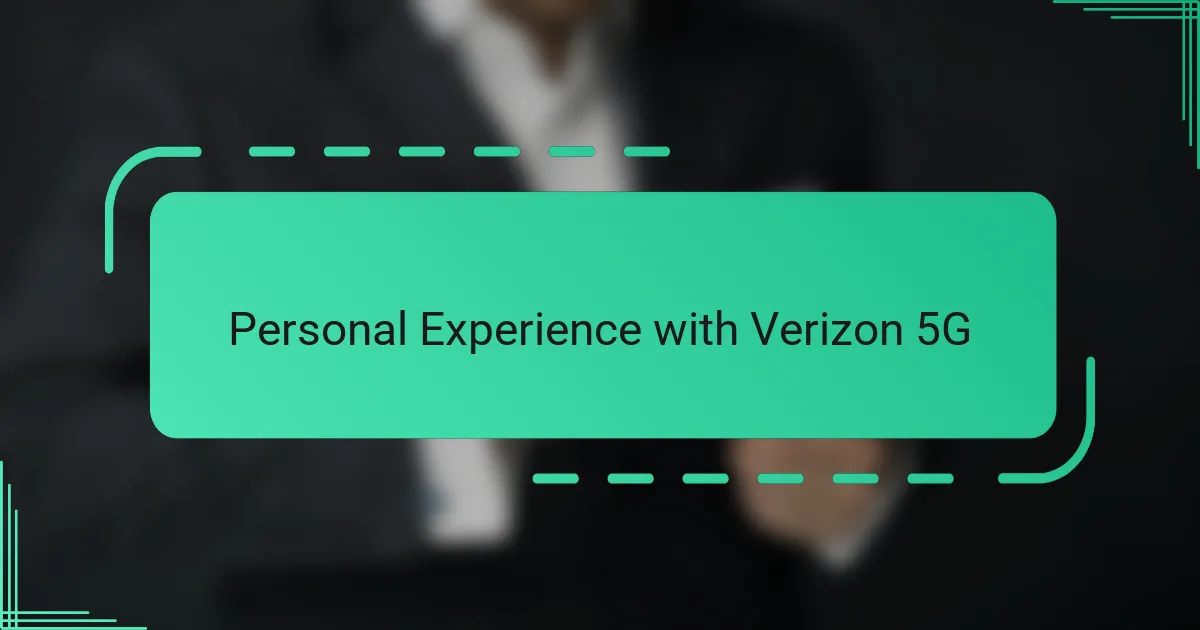
Personal Experience with Verizon 5G
Using Verizon’s 5G on my daily commute has genuinely changed how I experience connectivity. I remember catching a live stream on a busy subway platform—usually a nightmare for buffering—but this time, the video played flawlessly. Has there ever been a moment when your phone just couldn’t keep up? This felt like the opposite.
What really struck me was the consistency. Even in my apartment, where signals tend to drop, I noticed fewer dead zones and a smoother browsing experience. It made me realize how much of a difference reliable coverage makes in everyday life. I often wonder how much more productive and less frustrating our digital routines could be if this level of service were standard everywhere.
That said, I did have a curious experience trying to use 5G inside an older building. The signal was patchy despite being in a covered area, which reminded me that the technology still has some kinks to work out. It’s a mix of excitement and patience on my part—excited for the speed and potential, patient for the evolution ahead. Have you had similar ups and downs with 5G in your area?
